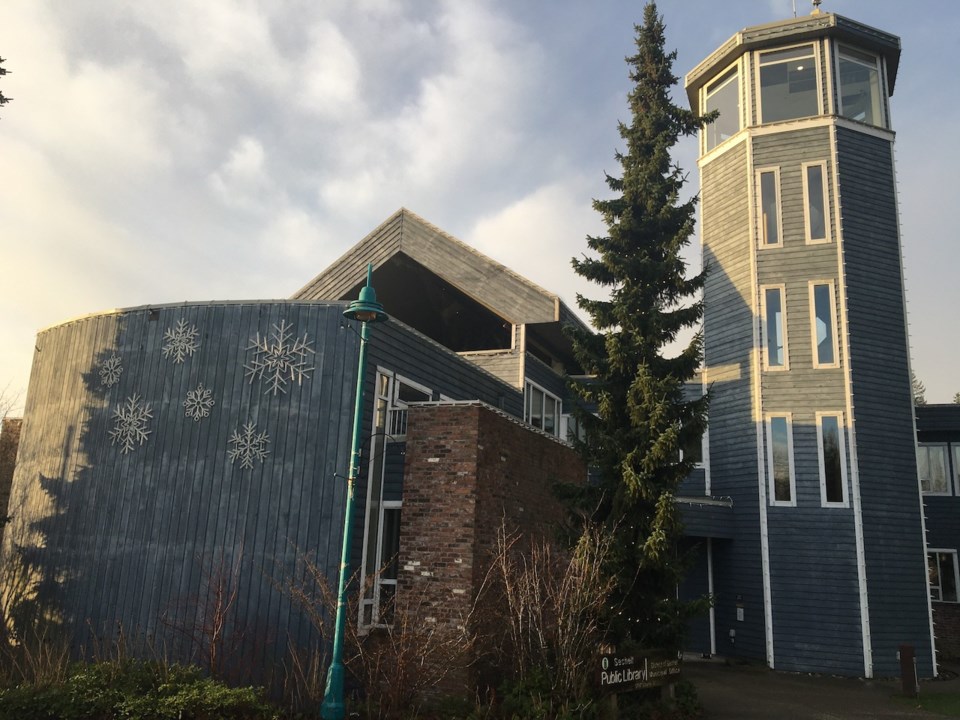An update to the 1987 vintage zoning bylaw and a policy to guide how District of Sechelt assets are managed have been in the development stage for years.
At the committee of the whole meeting on April 27, drafts of both saw support from the municipality’s elected officials. The next steps for those two documents will be consideration by council.
Sechelt zoning update
For the zoning bylaw, first reading is being slated for the May 4 meeting. The committee was in agreement with staff’s proposed timeline that would see that draft go to the community for review through to June.
Information meetings and a full public hearing are to be scheduled. The current aim is to have the bylaw ready for consideration of adoption by September, which director of planning Andrew Allen said was a “best case scenario,” which would be contingent on council approval and community acceptance of the details included.
Coun. Matt McLean applauded the work done to date and said this was “a big step towards modernization of one of our largest bylaws….Let’s work towards getting this thing passed.”
One item that Allen noted was not addressed in the draft was density bonusing. He noted that there had not been enough time to “to nail that down perfectly.” Further details on that subject will be in the draft bylaw update that is anticipated to come forward later this spring.
Creating new zones
The staff report received by the committee, states that the updating process’s outcome “will include modernizing zoning regulations, simplification of zones and visual appeal.” It “looks to create new housing choices while balancing the needs and wants of local Sechelt residents” and bring Sechelt closer in line with other similar sized municipalities in B.C. on regulations related to backyard agriculture, home-based businesses and smaller secondary homes.
The update also proposes creation of new zones for agricultural and mixed-use marine/residential uses. Parcels that are in the Agricultural Land Reserve (ALR) that were previously zoned “rural” would now be zoned “agricultural.” The new mixed-use area in Porpoise Bay attempts to balance residential, tourist commercial and marine industrial uses in that area.
Too short a timeline?
Concerns by residents have been raised on Facebook forums and through emails copied to Coast Reporter about the timeline proposed to shepherd the bylaw through to consideration of adoption this fall.
Jeri Patterson, owner of a property used for agricultural purposes in West Sechelt, has expressed concerns about the fate of properties where the current land use could be deemed non-compliant by bylaw changes. She is worried, as “dozens, perhaps hundreds of properties” could be affected, and states that Sechelt’s record in addressing issues of non-compliance in the past has been inconsistent.
“These issues should be discussed, and documented by the District to ensure the public, and land owners, or occupants are fully informed,” Patterson wrote in an April 24 email.
Addressing asset management
The proposed asset management policy, if adopted as recommended by the committee, is slated to “feature as a major influence” informing and guiding the Sechelt’s official community, parks and recreation, as well as financial plans, according to a staff report.
The policy designed to govern how existing and new assets are managed so that District services can be delivered “in a safe and financially sustainable way that meets the current and future needs of the community.”
Director of engineering, Kirn Dhillon noted that “the asset management process is a marathon not a sprint.” He said that one of the initial pieces of information he would like to see developed to help would be “report cards for asset management categories” attached to future year’s financial plans so that the community can see where and how many dollars need to be invested to maintain District infrastructure.



